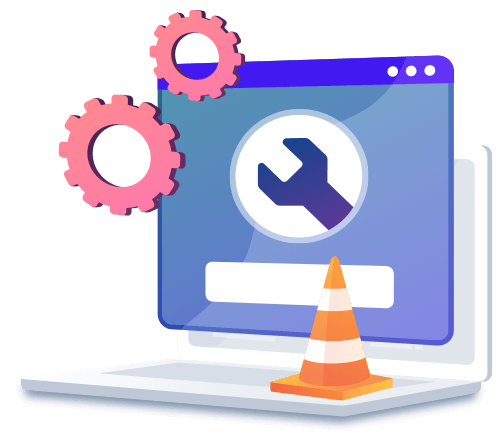Bonanza88 - Selamat Datang di Situs Judi Slot Gacor Terbaik dan Terpercaya di Indonesia
Bonanza88 adalah situs slot gacor paling ternama yang dikenal sebagai pelopor permainan slot favorit. Sayangnya, semakin populer dan banyaknya pemburu slot gacor gampang menang, kini makin bertebaran nama penyedia yang sangat mirip dengan Bonanza88 yang asli.
Kami Bonanza88 Asli hadir sejak tahun 2011, berharap para pecinta slot online untuk berhati-hati supaya jangan sampai salah pilih. Saat ini kami menggunakan nama domain www.technorthhq.com sebagai situs utama kami. Selain di situs ini, pastikan untuk akses Bonanza88 login dari komputer atau smartphone Anda dengan mengunjungi partner kami, buka blok Bonanza88 dan mengetik www.bonanza88.com login menjadi mudah. Anda dapat juga menggunakan link alternatif Bonanza88 yang kami bagikan juga dalam halaman ini.
Bonanza88 - Situs Judi Slot Gacor Gampang Menang yang Terpercaya
Sebagai pelopor situs judi slot online deposit pulsa ternama di tanah air Bonanza88 hadir pertama kali di Indonesia pada tahun 2011. Sebagian pelanggan kami juga mengenal situs slot Bonanza88 di situs Bonanza88 love (www.bonanza88.love). Terutama permainan slot Sweet Bonanza88 yang menjadi favorit para pemain dan hanya eksklusif di situs Bonanza88 yang asli.
Mengedepankan sistem keamanan mutakhir, inovasi teknologi dan perkembangan ragam permainan terbaru, menjadikan situs Bonanza88 sebagai situs slot online deposit pulsa terbesar dan paling dipercaya oleh para pecinta slot online, dan menjadi situs kumpulan slot gacor hari ini.
Bonanza88 - Situs Bola Tangkas Favorit
Bonanza88 pun menghadirkan permainan bola tangkas karena terinspirasi dari popularitas bola tangkas darat yang sangat banyak penggemarnya. Komitmen Bonanza88 untuk mempersembahkan salah satu permainan andalannya ini adalah dengan berhasilnya mendapatkan sertifikasi resmi dari GLI (Gaming Lab International). Sebuah lembaga independen dan ternama, yang bertugas untuk memastikan terciptanya sistem permainan yang adil (fair).
Sertifikasi ini memastikan bahwa kami tidak menggunakan robot sebagai player palsu atau player bayangan untuk mengelabui permainan. Selain itu, Algoritma RNG (Random Number Generator) canggih kami, menjamin setiap permainan yang tercipta menghadirkan peluang yang acak. Bola Tangkas GLI Bonanza88 diaudit dan diawasi secara berkelanjutan oleh GLI. Sekali lagi, ini untuk memastikan permainan adil, tanpa kecurangan bagi semua pihak.
Alasan Kuat Kenapa Anda Harus Bermain di Situs Judi Slot Online Bonanza88
Bermain slot online tidak dipungkiri sungguh mengasyikan. Namun hal ini bisa berubah jika Anda menjadi korban karena salah memilih situs judi slot online. Sebaiknya waspada dan kenalilah situs pilihanmu sebelum bermain. Itulah sebabnya sangat penting untuk memilih situs judi slot online terpercaya secara cermat. Berikut beberapa alasan kenapa Anda harus memilih situs Bonanza88 yang asli.
Kemudahan Deposit dan Proses Withdraw di Bonanza88
Situs Bonanza88 sebagai situs slot online deposit pulsa ternama memberikan kemudahan dalam mengisi saldo akun Anda langsung dari pulsa smartphone, mulai dengan nominal yang relatif terjangkau. Namun, jangan khawatir, kami juga menyediakan berbagai macam pilihan metode lain yang tidak kalah mudahnya. Anda bisa deposit dengan menggunakan e-wallet dan transfer bank terkemuka dengan minimal deposit Rp.20.000. Dan yang paling penting, proses deposit dan withdraw ini berlangsung dalam waktu yang relatif singkat 1 hingga 5 menit saja, serta berapapun kemenangan Anda, pasti kami bayar! Mudah dan nyaman bukan?
Promo dan Bonus Seru Setiap Waktu
Bonus adalah pertimbangan lain yang harus Anda perhatikan saat memilih situs judi slot online terpercaya. Bonus ini penting untuk meningkatkan peluang Anda mendapatkan keuntungan ekstra. Bonanza88 menawarkan kumpulan slot gacor gampang menang dengan begitu banyak penawaran menarik yang pastinya menguntungkan bagi semua pelanggannya, diantaranya:
- Komisi atau slot rebate harian yang dikenal paling Besar di Indonesia
- Lucky Bonus / Cash Drop
- Cashback
- RTP paling tinggi
Layanan Pelanggan Bonanza88 24/7
Bermain di situs judi slot online Bonanza88, hal utama yang kami perhatikan adalah kenyamanan dan keamanan Anda. Bonanza88 selalu menyertai Anda dengan layanan dukungan pelanggan 24 jam 7 hari dalam seminggu. Bonanza88 siap membantu kapan saja jika Anda mengalami kendala saat bermain.
Aman dan Terpercaya
Fenomena belakangan ini yang semakin banyaknya situs yang menyerupai Bonanza88. Banyak yang mencari - slot88, slot gacor Bonanza88, slot gacor hari ini - menjadikan bermain judi slot online semakin beresiko. Namun jika Anda memilih bermain di situs Bonanza88, maka dipastikan bisa bermain dengan nyaman.
Pengalaman Bermain Menyenangkan
Tidak sedikit orang yang bermain judi slot online hanya untuk mencari hiburan di sela kegiatan rutin harian yang melelahkan dengan berburu slot gacor gampang menang. Kami situs Bonanza88 hadir menjawab kebutuhan tersebut. Dengan komitmen selalu mengutamakan kepuasan pelanggan, situs judi slot Bonanza88 menawarkan kumpulan permainan slot gacor hari ini, paling populer untuk dimainkan kapan saja.
Beberapa Pilihan Permainan Favorit Situs Bonanza88 Asli
Bonanza88 memiliki berbagai permainan favorit yang paling banyak dimainkan para pelanggan setianya. Pilihan permainan ini hadir atas permintaan pelanggan dan kami sajikan dengan versi terbaik.
Slot Online
Sebagai andalan dari situs judi Bonanza88, slot bonanza 88 diisi dengan berbagai permainan slot dari pengembang terkemuka. Situs Bonanza88 Asli menyediakan permainan dengan tampilan grafis, bonus jackpot dan pengalaman bermain yang seru. Berikut beberapa permainan slot gacor gampang menang, yang tersedia di situs Bonanza88:
Slot Online Pragmatic Play
Pragmatic Play dikenal sebagai produsen slot gacor yang paling populer. Provider yang fokus pada kualitas grafis dan permainan interaktif yang memanjakan para pecinta slot Bonanza88. Salah satu slot gacor besutan mereka adalah sweet Bonanza88.
Slot Online Habanero
Provider lain yang menyediakan slot gacor gampang menang di situs Bonanza88 adalah Habanero. Selain slot gacor yang canggih, provider ini mengutamakan kemudahan dari sisi pengguna. Habanero dikenal sebagai pencipta slot gacor yang minim penggunaan kuota, namun dengan fitur canggih kelas dunia.
Slot Online Microgaming
Microgaming menjadi provider lain slot Bonanza88. Dikenal sejak 1994, provider ini banyak menciptakan slot gacor gampang menang dalam versi mobile maupun desktop. Dan kerennya, provider ini relatif sering merilis permainan slot gacor terbaru.
Slot Online Gacor Lainnya
Selain tiga provider di atas, ada pula provider lainnya seperti Qtech, Skywind, Spadegaming, Play n Go, CQ9 dan Netent. Tidak kalah menariknya provider ini merupakan provider yang memiliki kelebihan masing-masing dari sisi grafis, SFX serta animasi permainan.
Bola Tangkas
Bola Tangkas Bonanza88 memiliki banyak penggemar tersendiri, sebagaimana populernya permainan ini di Indonesia, yang dikenal dengan nama "Mickey Mouse". Bonanza88 menciptakan permainan Bola Tangkas Online terbaik yang satu-satunya di Indonesia memiliki lisensi dan Sertifikasi Resmi dari Gaming Lab International (GLI). Yang menjamin Bola Tangkas Bonanza88 sebagai permainan bola tangkas GLI paling fair dan bebas kecurangan.
Taruhan Olahraga/ SportsBook
Bonanza88 sportsbook adalah permainan bagi Anda yang gemar bertaruh dalam olahraga. Ini merupakan permainan lain Bonanza88 yang populer. Terutama judi bola. Bonanza88 menyediakan berbagai permainan Sportsbook serta menjalin kerja sama dengan berbagai agen bola resmi yang berpengalaman.
Live & VIP Casino
Live Casino Bonanza88 dan VIP Casino Bonanza88 diperuntukan bagi Anda yang senang bermain casino dengan pengalaman layaknya bermain di casino konvensional. Permainan populer pilihan pemain diantaranya Baccarat, BlackJack, Dragon Tiger, Roulette serta Keno. Dipandu oleh para dealer yang menarik memastikan pengalaman bermain Anda menjadi lebih nyaman.



 IM Poker
IM Poker
